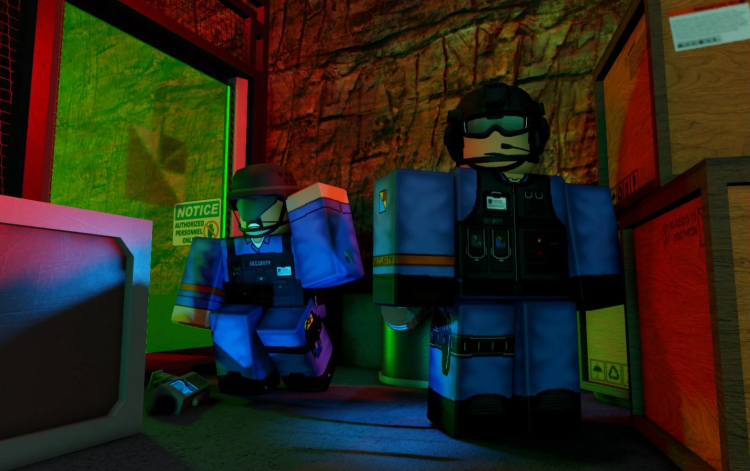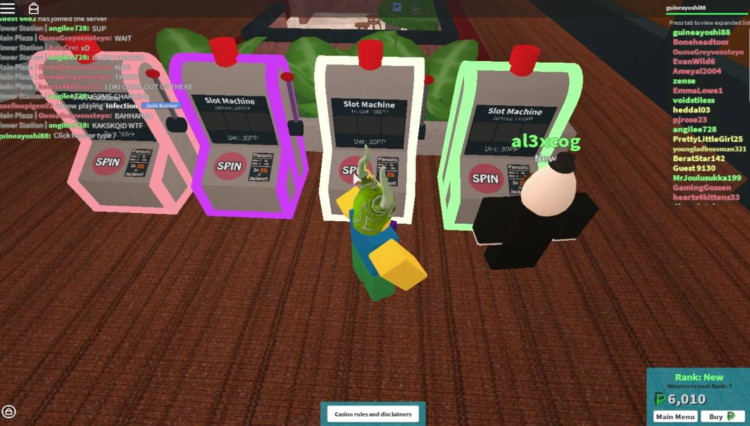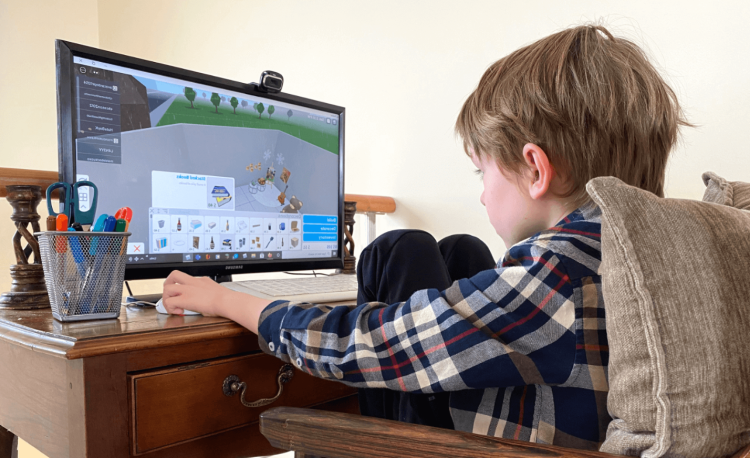Inside Roblox’s Safety Drama After A Tense CEO Interview
The latest ROBLOX CEO Interview has pushed long-simmering doubts about the platform’s safety culture into full view. Roblox has been under scrutiny for years, but the numbers have hardened that attention. The company now counts about 150 million daily active users, many of them children, and recorded a previous internal figure of more than 13,000 reported instances of child exploitation over a single year.
Appearing on The New York Times’ tech podcast Hard Fork, Roblox co-founder and chief executive David Baszucki was asked directly about predators targeting children on the service. His decision to describe that problem as “an opportunity” landed with unusual force, because it arrived not in isolation but against a backdrop of lawsuits, moderation failures, and policy fights that have already stretched parents’ trust to the limit.
Three US states — Louisiana, Kentucky, and Texas — have filed lawsuits claiming Roblox has not done enough to protect minors. More than 20 additional cases in federal court allege that the platform enabled sexual exploitation. At the same time, Roblox has been rolling out AI-driven age estimation and broadened chat restrictions, then touting those tools as proof that it is staying ahead of the wider industry.
Hard Fork hosts Casey Newton and Kevin Roose framed their questions in that context. When Newton asked how he thought about “the problem of predators on Roblox,” Baszucki replied:
“We think of it not necessarily just as a problem, but an opportunity as well. How do we allow young people to build, communicate, and hang out together? How do we build the future of communication at the same time?” — David Baszucki.
The rest of the answer made clear that he meant an opportunity to innovate in moderation and communication design. The phrasing, though, turned one of the darkest realities of any children’s platform into a growth challenge. For critics, it reinforced a suspicion that Roblox leadership views safety as another engineering problem to optimize rather than a hard boundary that can limit what a company should do.

Throughout the ROBLOX CEO Interview, Baszucki kept returning to scale as both explanation and shield. He noted that Roblox users log around 11 billion hours per month and pointed to Steal a Brainrot, a hit game that reached 25 million concurrent players over the summer, as evidence of what the platform’s infrastructure can support. Asked whether predators have found it easy to bypass filters, he declined to directly answer and instead said:
“It’s one of the primary things we’re doing is trying to keep people on our platform… we’re always trying to stay ahead of it.” — David Baszucki.
When Newton followed up, asking bluntly whether he believed Roblox had a predator problem, Baszucki did not concede the premise.
“I think we’re doing an incredible job at innovating relative to the number of people on our platform and the hours, in really leaning into the future of how this is going to work.” — David Baszucki.
The exchange crystallised the tension. On one side, a company that has spent nearly two decades building tools for user-generated games and communities, now leaning heavily on AI filtering and age estimation to manage risk. On the other, a growing camp of parents, regulators, creators and advocacy groups who say the basic question remains unanswered: is this enough, and who gets to decide?

That question has been sharpened by cases beyond the podcast. Roblox recently banned YouTuber Schlep, a creator who built a large audience by staging “predator-hunting” sting operations in Roblox spaces. His videos, which he claims have led to multiple arrests, were removed, and his account was closed under Roblox’s rules against vigilante action. Supporters have rallied behind the #freeschlep hashtag and argue that his work highlighted failures in the company’s own systems. For them, hearing the chief executive call the predator crisis an “opportunity” days after cutting off one of the most visible, if controversial, watchdogs sounded like a misreading of the moment.
Legal pressure is building as well. Law By Mike, a popular YouTuber and practicing attorney, has publicly signalled plans to pursue legal action against Roblox over alleged gaps in child protection. His involvement matters because he straddles two worlds: he understands the mechanics of platform governance and speaks to the same audience of parents and teenagers who treat Roblox as a social commons. Taken together with the state and federal lawsuits, his push widens the front on which Roblox must defend its record.
Inside the Hard Fork interview, Baszucki tried to shift the frame from crisis management to long-term architecture. He described the new facial age estimation system — a video selfie that is used to assess a user’s age before allowing them to chat — as one more signal in a stack that also includes behavioural data and self-reported age.
“We already do a pile of stuff: We have very, very good text filters; there’s no image sharing; we’re doing a bunch of monitoring. But adding one more signal to that can really help us make cool decisions.” — David Baszucki.
He argued that the platform has historically traded some growth for safety by heavily filtering text, invoking the old meme of Roblox chat collapsing into “hashtag, hashtag, hashtag” when forbidden words were blocked. With AI, he said, filters can become more precise and resilient against adversarial tactics, such as users trying to encode contact details through coded phrases.

The podcast, produced as part of The New York Times Podcast portfolio, did not stay in that technical lane for long. Roose raised a 2024 report from Hindenburg Research accusing Roblox of “compromising child safety in order to report growth to investors” and pointing to reduced spending on trust and safety. Baszucki dismissed the firm with a laugh. “Fun. Let’s keep going down this,” he said, noting that Hindenburg had since gone out of business and arguing that the shift to AI review systems is equivalent to moving from hand-built cars to an assembly line. The point, he suggested, was not cutting corners but applying better tools.
That emphasis on AI puts Roblox in a familiar category. Social networks spent much of the 2010s promising that automated systems would clean up abuse and misinformation at scale, only to discover hard limits on what machine learning can reliably judge. Roose and Newton reminded Baszucki of that history. He responded by insisting that Roblox’s internal metrics show filtering and detection improving as new models are deployed, and that the “mind-boggling” scale of the platform makes that kind of automation not just efficient but necessary.
Even within games, Roblox’s moderation stance is under strain. Advocacy groups such as Women In Games, Out Making Games, and BAME in Games recently published an open letter criticising the company’s draft creator rules around “sensitive issues.” “Roblox’s recently proposed creator guidelines regarding ‘sensitive issues’ represent a step backward for both creative expression and social justice,” the letter argued, warning that treating topics such as gender equality, reproductive rights, and racial justice as optional or risky “sensitive” zones risks burying stories that matter for young players. — Women In Games, Out Making Games, and BAME in Games.
That critique does not focus on predators or age checks, but it speaks to the same underlying concern: who sets the boundaries of what young users can see and discuss, and whose comfort those decisions serve.

The Hard Fork conversation eventually moved to Polymarket, a cryptocurrency-based prediction platform that Baszucki praised as a powerful information signal. When Roose asked, half-jokingly, whether he would ever put a prediction market inside Roblox itself, Baszucki answered in the affirmative, then acknowledged the legal complexity. Pushed on whether turning prediction markets into a game for children would be a “horrible idea,” he replied:
“Well, I actually think it’s a brilliant idea if it can be done in an educational way that’s legal… just a game called the Dress to Impress Predictor, where it’s not like trying to get kids’ money or anything like that. I would be a big fan of it.” — David Baszucki.
For a company already under examination for how it treats minors, the idea of building a gamified prediction engine inside Roblox, even without direct financial stakes, will be hard to separate from broader debates about loot boxes, gambling mechanics, and digital compulsion.
At several points, Newton noted that the conversation felt tense. Baszucki insisted he was not frustrated, only surprised that the focus remained on safety rather than lighter industry topics, and repeatedly described Roblox’s position as a “high-responsibility situation” that is also an “incredible opportunity.” He rejected the image of a chief executive who spends his days looking over his shoulder, arguing that the company has been pre-emptive about safety “from Day 1,” even stopping growth in its earliest weeks to build basic moderation tools.

That confidence carried through to the end of the ROBLOX CEO Interview, when Roose asked a personal question: whether Roblox would be safe enough by the time his own young son asked to play it. Baszucki went further than a simple yes.
“Roblox is an amazing platform right now for your kid,” he said, offering to show internal metrics under nondisclosure if needed and adding that parents remain “the ultimate arbiter of responsibility.” — David Baszucki.
The answer captures the company’s stance in miniature. Roblox positions itself as already ahead of the curve, already safer than many peers, already using tools that others will eventually adopt. The unresolved issue is whether that self-assessment matches the experience of families who have seen grooming or exploitation cases emerge from the platform, or of creators and advocates who say their own warnings were brushed aside until lawsuits and headlines forced a response.
None of this erases what Roblox has built. The platform has a maintenance role in the broader online games economy: it is both a creative toolkit and a massive social hub where children learn how online communities work, for better and worse. The Hard Fork episode shows how fragile that position can be when trust wobbles. Baszucki’s remarks did not introduce new facts about Roblox’s safety systems, but they did reveal how the company’s leadership ranks its priorities. Innovation, scale, and long-term platform vision sit at the centre; clear acknowledgement of harm sits closer to the edge.
Read also, Roblox Surpasses 100 Million Daily Active Users, a milestone that underlines how quickly the platform’s audience has grown and why every decision about safety, moderation, and policy now carries consequences far beyond a single ROBLOX CEO Interview.


EGAMERSW - get 11% Deposit Bonus + Bonus Wheel free spin
EXTRA 10% DEPOSIT BONUS + free 2 spins
BEST ODDS, free daily case, free rains, daily, weekly and monthly rakeback!

Sign up now and get 2 FREE CASES + 5$ Bonus
3 Free Cases + 100% up to 100 Coins on First Deposit



Comments